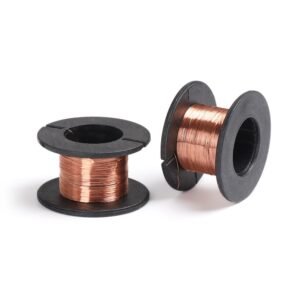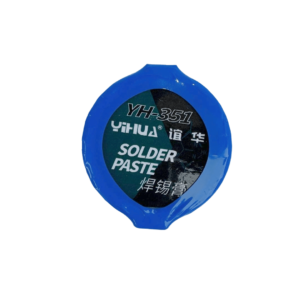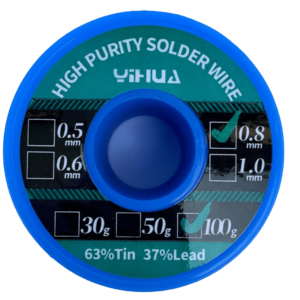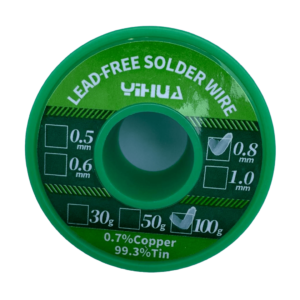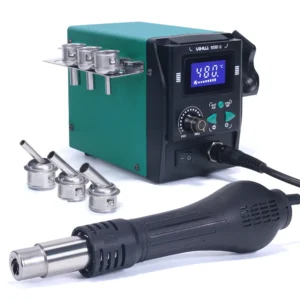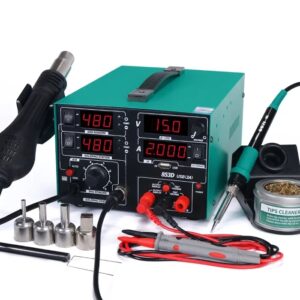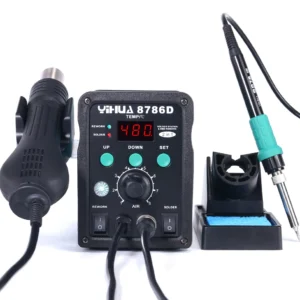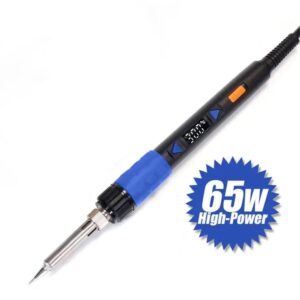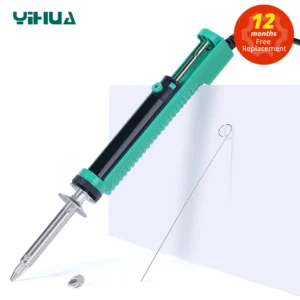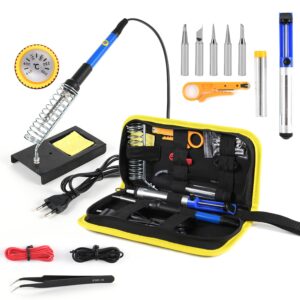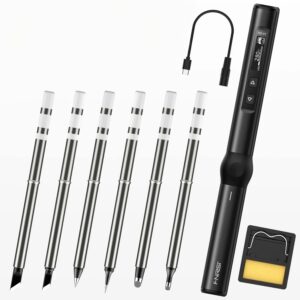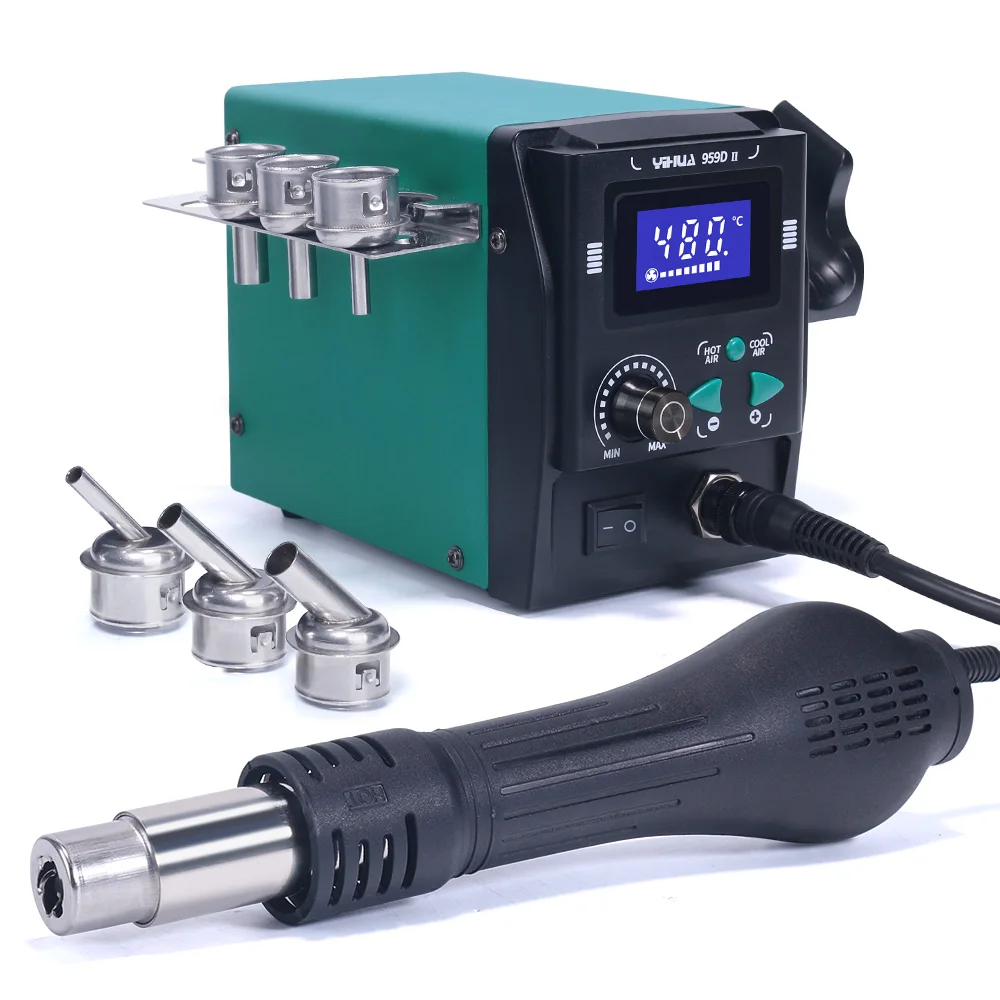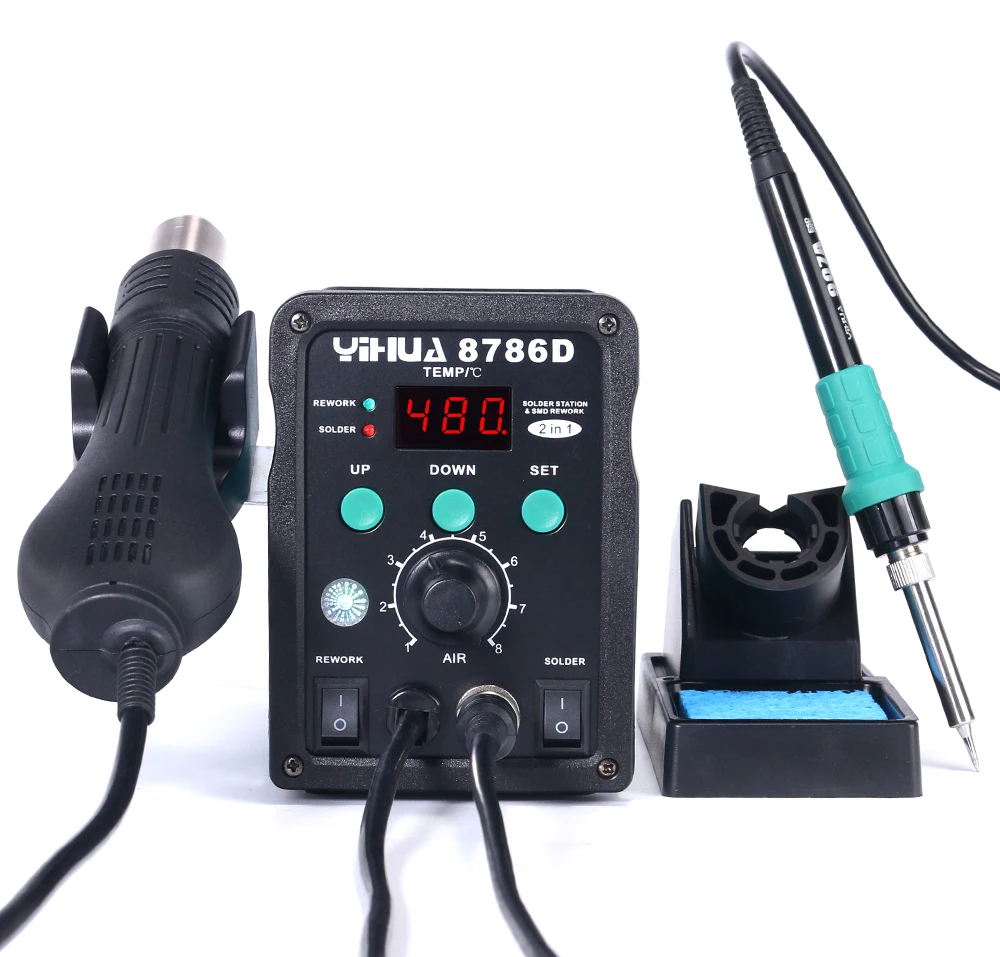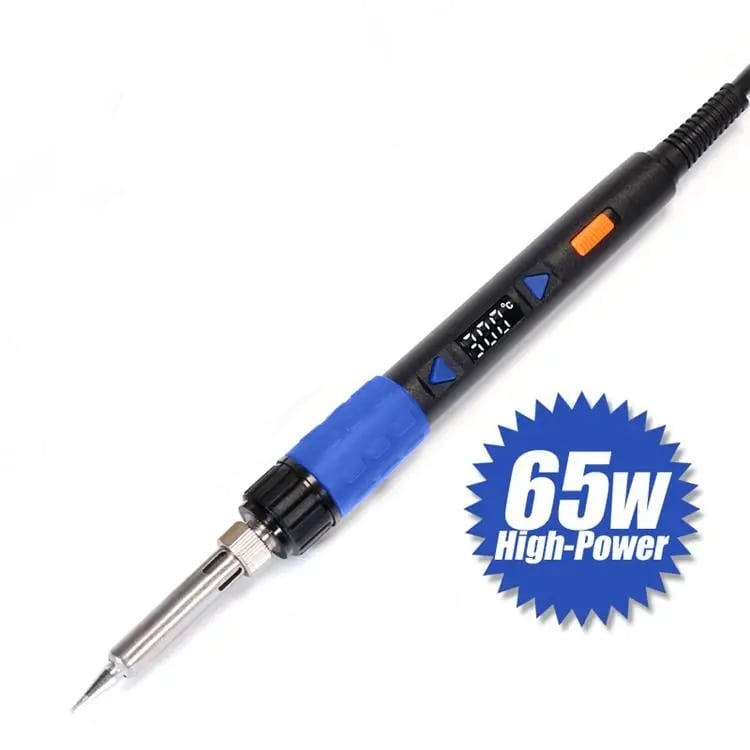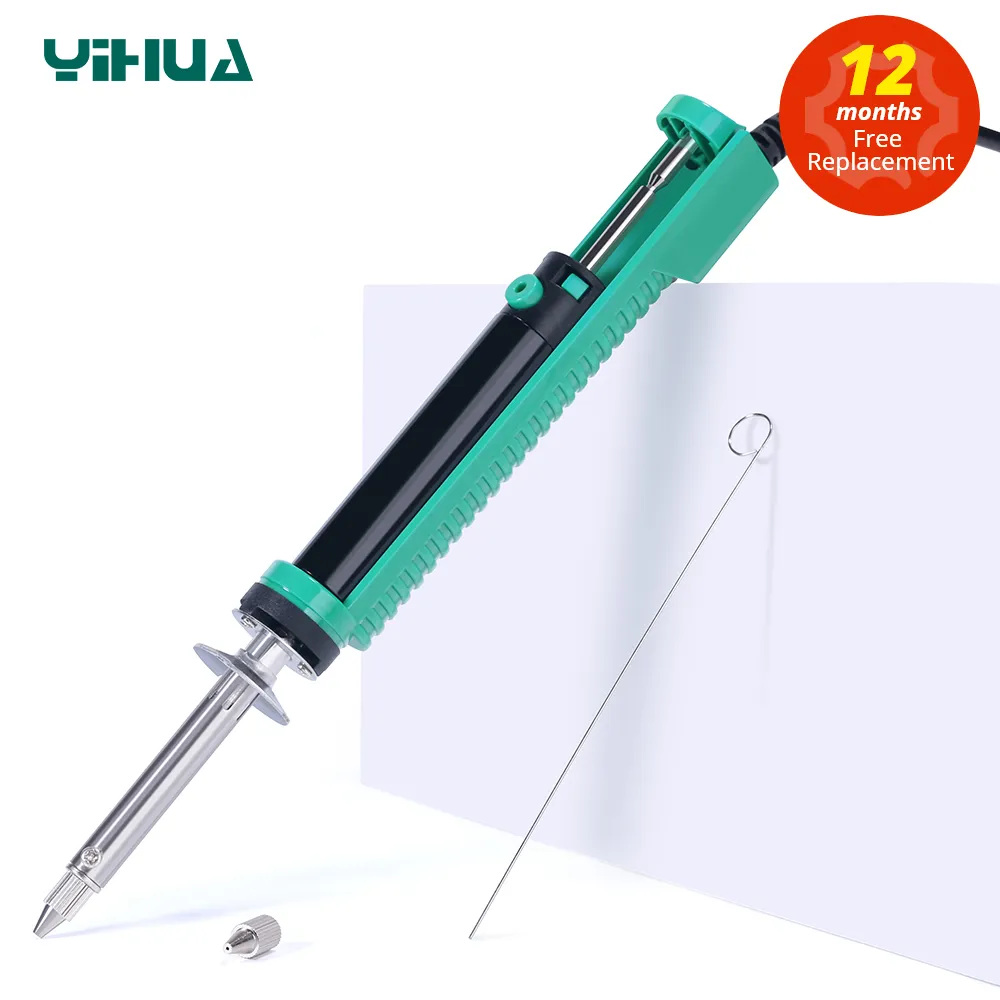What is Soldering? By definition, soldering is a method of creating robust electrical connections by melting and flowing a filler metal – solder – between two workpieces. It’s a fine art that marries precision with heat, enabling metals to unite without compromising their integrity.
The soldering definition extends beyond its practical applications, embodying the seamless fusion of technological advancement with age-old techniques duly adapted for modern complexities. Enthusiasts recognise the process as not merely a means to an end but as a skillset that is key to innovation in an ever-evolving landscape of electronic fabrication and repair.
Understanding this technique in detail reveals the nuances of temperature control, solder selection, and the meticulous care required to form connections that are electrically sound and mechanically steadfast. Hence, whether it’s the simple repair of a household gadget or the intricate assembly of circuit boards, soldering stands as the backbone of numerous technological endeavors.
Key Takeaways
- Soldering is a technique crucial for creating robust electrical connections in electronic components.
- The process requires a soldering iron to heat solder above its melting point to join metals.
- It’s important to use the right type of solder and flux to ensure strong, conductive bonds.
- Proper temperature control is vital to prevent damage to components and achieve reliable joints.
- With the right skills, soldering facilitates repairs and the construction of electronic devices.
- Mastery of soldering is a rewarding and beneficial skill for both DIY enthusiasts and professionals.
Introduction to Soldering and Its Fundamental Uses
The meticulous art of soldering comprises a series of well-defined processes and techniques, paramount in creating durable electrical connections within a vast expanse of electronic devices. This realm is inhabited by professionals and enthusiasts alike, who engage in projects as diverse as the construction of robotics to the crafting of intricate Arduino circuits. The mastery of the soldering process is not only characterised by the act of melting solder—a metal alloy with a relatively low melting point—but also by the precision in which this molten substance is administered around electrical connections.
Essential to the existence of any given circuit board, solder provides the electrical continuity necessary for the functionality of devices, rendering it a stalwart in the field of electronic manufacturing and hobbyist projects. Its role is further magnified when considering desoldering—the counterpart process that involves the removal of solder—making such electrical connections not only strong and dependable but also reversible.
For the adept practitioner, soldering techniques afford the means to mend and invent, with a soldering iron serving as the proverbial wand that manipulates the alloy into forming steadfast bonds on copper tracks lining the substrates of circuit boards. It’s a symphony of heat and metal that results in connections which promise endurance and reliability. The journey through the soldering process, seasoned by experience and enriched with each melted filament, is an adventure in creating electrical connections that are as robust as they are essential.
Soldering, or the art of joining two elements without the need for their mutual melting, is integral to the lifespan of electronic components. It is within this intricate dance of lead and heat that the foundations of modern technology are both sustained and advanced.
- The soldering process starts with a clean, well-maintained soldering iron whose heated tip is the catalyst for the solder’s flow.
- Applying the right soldering techniques ensures that every joint provides not just mechanical stability but premium electrical conduction.
- Creating electrical connections with solder demands not only skill and patience but also an understanding of material composition and the peculiarities of the electronic components in use.
In sum, the universe of soldering is one of transformative power where mere metals are bound in a union facilitated by heat, solidified by cooling, and characterised by a symbiosis of strength and conductivity.
The Essentials of Soldering Equipment
Delving into the essentials of soldering tools, one must understand the pivotal role soldering equipment plays in achieving the perfect soldered joint. The cornerstone of such equipment is the soldering iron, a nuanced tool designed to meet various levels of complexity within soldering tasks. Advanced practitioners champion the use of soldering stations, offering refined temperature control and enhanced capabilities. With soldering constituting a core skill in electrical engineering and DIY projects, it’s imperative to equip oneself with the right tools to forge reliable connections.
The Numerous Types of Soldering Irons
For novices, embarking on soldering projects commences with selecting a suitable soldering iron. The quintessential pen-style iron represents an ideal starting point; it’s user-friendly and sufficiently versatile for simple tasks. Professionals often turn to more sophisticated soldering stations that harmonise power with precision, offering the ability to finetune the temperature—imperative for a variety of soldering fluxes and joint requirements. One’s choice in soldering iron significantly affects the quality and efficiency of the work at hand.
How to Select the Right Solder for Your Project
Equally as crucial as the iron itself is the solder used. Typically sold as wire, the diameter of solder plays a pivotal role in bridging connections between components of differing sizes. From slender wires suitable for delicate electrical components to thicker gauges designed for robust connections, the diversity in solder sizes caters to the vast spectrum of soldering needs. The paramount rule is to select a solder whose diameter complements the joint, forging a steadfast bond without excess overflow.
What is Soldering Flux and Why is it Necessary
The unsung hero in the soldering process is undoubtedly the flux. Residing within the core of the solder, this chemical agent wards off oxidation at the site of the joint, ensuring the solder adheres properly and renders the connection both mechanically sound and electrically conductive. Soldering flux is indispensable for both enhancing the quality of the connection and prolonging the lifespan of the soldering iron tip through maintaining cleanliness and efficient heat transfer.
Maintaining one’s soldering equipment is an art in itself. Inclusions such as cleaning sponges and iron brushes are not mere adjuncts; they are essential for preserving the efficacy and longevity of soldering tools. Whether you are a seasoned technician or a budding hobbyist, your results will invariably reflect the attention given to selecting and upkeeping your soldering tools.
What is Soldering? The Process Explained
The soldering process explained begins at the very heart of electrical engineering and metalwork, where the primary objective is joining metals using a fusible component known as a solder alloy. Soldering requires a meticulous approach, hinging on the principle that the metals in question do not have to melt. Instead, a solder – usually a malleable alloy composed of tin, lead, or alternative lead-free materials – is heated past its melting point to join the elements in a permanent embrace.
Soldering is essential for creating robust, long-lasting metallic bonds that become the conduits for electrical currents in a range of devices. At its core, a soldering iron’s tip is heated to high temperatures, well exceeding 600 degrees Fahrenheit, which is sufficient to melt the solder. Once molten, this solder is coached into the intended joint, seamlessly binding the workpieces at a molecular level.
As the solder cools and solidifies, it forms a solid electrical and mechanical link between the metals, ensuring that the electricity can flow uninterrupted through the joints. The physical form of solder can vary, but it typically comes as wire or in pellets, with its diameter being a critical factor for the level of finesse required in the project at hand. For example, finer wires of solder are preferred for minute, precise work on circuit boards or delicate electronic components, while a robust solder joint necessitates a thicker gauge to accommodate the increased structural demands.
The versatility of the soldering iron is amplified by its interchangeable tips, each tailored for different roles. This allows the user to fine-tune the application, with narrower tips like the conical tip facilitating precision tasks, while broader ones like the chisel tip are better suited to manage larger components or wires. Knowing the appropriate tip to use is an integral part of the soldering skillset.
The real artistry in the soldering process lies not only in how heat is applied but also in understanding and managing the properties of the solder itself. Different alloys have different melting points, and the mix of metals in a solder alloy can be adjusted to suit specific tasks. The pursuit of a clean, strong bond drives the ongoing development of solder alloys, as industry standards move increasingly towards lead-free varieties that offer safer, environmentally conscious alternatives.
Ultimately, soldering is more than just the action of joining metals; it is a choreographed proces involving heat control, material selection, and the fine-tuned application of a soldering iron tip to create electrical pathways that are fundamental to the gadgets and technologies we use every day.
Advanced Tools: Delving into Soldering Stations and Accessories
In the intricate landscape of electronics, the rise of advanced soldering demands a breadth of sophisticated tools to match the meticulous nature of the task at hand. Stepping beyond the realm of simple pen-style irons are the soldering stations, a leap in technological innovation geared towards precision, efficiency, and enhanced safety.
Soldering stations outshine their simpler counterparts by offering feature-rich interfaces and digital temperature controls, granting users an unprecedented level of mastery over their soldering projects. These advanced devices generally incorporate integrated heat sensors, providing instant feedback for temperature adjustments. Enhanced with audible alerts and occasionally password protection, these stations ensure that project parameters remain consistent and safe, essential factors when engaged in advanced soldering tasks.
- Digital Display: Facilitates real-time monitoring of the temperature.
- Heat Sensor: Maintains the desired temperature with precision.
- Adjustable Temperature Control: Allows for versatile soldering on various materials.
- Password Protection: Ensures that settings are secure in a shared environment.
Further augmenting the soldering experience are the myriad soldering station accessories designed to enhance accuracy and prolong the life of soldering equipment. A quintessential component of any advanced kit is the tip-cleaning accessory. Far transcending the basic iron brush or damp sponge, these cleaning systems often leave a fine layer of solder on the tip post-cleaning, which not only clears away residue but also serves as a protective barrier against oxidation.
- Brass Sponge: A superior alternative to the conventional damp sponge for tip cleaning.
- Cleaning Kits: Comprehensive solutions that help to maintain tip quality and reduce wear.
- Iron Stands: Provides a secure place to rest the hot iron, reducing the risk of accidents.
- Advanced Desoldering Tools: Offer precise control for removing solder without damaging components.
The evolution of soldering into a more complex art form mandates a set of tools that not only keeps pace but enhances every solder’s ability to create seamless, reliable connections. As tech aficionados or professional technicians look to push the boundaries of what’s possible with their soldering endeavours, this suite of advanced tools becomes an essential arsenal for tackling any challenge presented by modern electronics.
Different Soldering Techniques for Efficient Joining
Mastering efficient joining through soldering hinges on the utilisation of proper soldering techniques and a meticulous approach to ensure durable and reliable connections. The quintessence of proper soldering lies in the fine details, from correct preparation of the iron tip to strategic application of heat during the creation of solder joints. Achieving a soldering connection that resembles a neat volcano or cone shape is indicative of a well-executed joint.
Tinning, a pre-soldering procedure, is paramount for maintaining the performance of the iron and ensuring effective heat delivery. Below is a sequence refined through practice by seasoned professionals which highlights the steps involved in creating an exemplary soldered joint:
- Ensure that the soldering iron tip is clean and well-tinned. This involves coating the tip with a fresh layer of solder before commencing your soldering work.
- Heat the joint with the iron tip, not just placing the solder onto the cooled metals. It’s vital that both solder and joint are heated concurrently for a smooth flow and solid joint formation.
- Introduce the solder to the joint, not directly to the iron tip, to allow the solder to naturally flow around the heated connection, forming that sought-after volcano or cone shape.
Desoldering is also an invaluable skill, integral for rectifying errors or reclaiming components. A pivotal tool in desoldering, the solder wick, is used to absorb excess solder when too much has been applied or if a joint requires dismantling:
- Place the desoldering braid over the unwanted solder.
- Press the heated soldering iron tip onto the braid above the solder. The heat will transfer through, melting the solder which is then drawn up into the braid.
- Remove the braid and iron simultaneously once the solder has been wicked away, leaving a clean area with which to work anew.
The table below showcases two essential soldering techniques and their respective functions, which are crucial for achieving efficient and reliable electronic connections:
| Technique | Function | Consideration |
|---|---|---|
| Tinning | Preparation of the iron tip and work surface before the actual soldering | Essential for improving heat transfer and longevity of the soldering tip |
| Desoldering | Removal of excess or undesired solder | Requires precision to avoid lifting pads or damaging components |
Ultimately, proper soldering actuates the lifeblood of electronic projects, ensuring that each connection not only conducts electricity but does so while resisting mechanical stress. The pursuit for soldering mastery is a constant learning curve; however, with patience and practice, it becomes an invaluable asset in any maker’s toolkit.
Picking the Appropriate Soldering Temperature for Various Metals
When venturing into the realms of electronic engineering and metalwork, the application of the correct soldering temperature plays a pivotal role. It is the skilled adjustment of heat that brings about strong and durable metallic unions. Soldering a spectrum of metals not only demands precision but also a keen understanding of how various materials react to heat.
Understanding the Importance of Temperature Control
Temperature control lies at the heart of successful soldering, dictating the integrity of the connections formed. Advanced soldering stations afford enthusiasts and professionals the ability to manipulate temperatures with finesse, catering to the delicate nature of temperature control and the requirements of various metals soldering. The right temperature is integral to avoiding component damage while also ensuring a secure bond.
Assessing the Metals and Appropriate Soldering Heat
To craft joints that boast both electrical conductivity and mechanical solidarity, one must assess and apply appropriate heat levels for different metals. This means exceeding their melting points without causing thermal detriment. Here is where sophisticated soldering stations prove indispensable, with their capability to fine-tune heat according to the metal’s specific threshold.
The ideal soldering temperature varies, hinging upon the materials in question. For instance, soldering intricate circuitry onto a copper base requires a different approach compared to joining larger pieces of brass or silver. The table below presents a guide to the specific heat requirements for soldering a selection of common metals, maximizing the efficacy of each connection forged.
| Metal Type | Optimal Soldering Temperature | Notes |
|---|---|---|
| Copper | 370℃ – 385℃ | Requires higher temperatures due to its thermal conductivity. |
| Silver | 215℃ – 230℃ | Lower temperatures are adequate owing to silver’s lower melting point. |
| Brass | 350℃ – 370℃ | Moderate heat prevents the zinc content from vaporising. |
| Aluminium | Not typically soldered | Requires specialized techniques and solders due to its oxide layer. |
In conclusion, mastering soldering temperature is an art that, when perfected, leads to work of exceptional calibre. Whether you are connecting delicate electronic components or undertaking broader metalwork tasks, the meticulous management of heat is essential. Through judicious application of temperature control, the art of various metals soldering is demystified, enabling the creation of lasting, robust metallic bonds.
Soldering Safety: Protecting Yourself and Your Workspace
Within the realm of metalwork and electronics, the importance of soldering safety cannot be overstated. Engaging in the process of joining metals with heated solder involves a significant risk of burns and inhalation of noxious fumes. Adhering to safety protocols and employing appropriate protective gear is essential in mitigating these hazards, ensuring the well-being of both the individual and their soldering workspace safety.
Essential Safety Gear and Precautions
As the soldering iron reaches temperatures sufficient for melting alloys, it’s crucial to arm oneself with the necessary protective apparel. The use of safety goggles protects the eyes from splashes of hot solder, while gloves can provide protection against inadvertent skin contact with the heated tip or molten solder. A soldering iron stand serves as a reliable and safe holster for the iron when not in use, preventing potential accidents.
- Protective eyewear to shield against splashes
- Heat-resistant gloves to avoid burns
- A soldering iron stand for securing the hot iron
Proper Ventilation Protocols to Follow
The fumes emanating from melting solder, particularly when working with lead-based or flux-integrated variants, can be harmful if inhaled. Ensuring the workspace is well-ventilated is pivotal in safeguarding the solderer’s respiratory health. Utilizing a fume extractor or a fan with a charcoal filter can actively remove harmful substances from the air. Additionally, setting up soldering activities near open windows or in an environment with clean airflow contributes greatly to maintaining a safe work area.
- Use a fume extractor or fan to eliminate toxic fumes.
- Work in a well-ventilated area, ideally with access to fresh air.
- Consider the placement of your workbench to enhance airflow.
Adherence to these safety measures, complemented by consistent practices like tinning the solder tip and using adjustable temperature controls, substantially reduces the risk of injuries and health concerns. By taking these preventative steps, one can foster a secure and conducive environment for soldering excellence.
The Intricacies of Solder Joints and Their Formation
The meticulous process of crafting high-quality solder joints lies at the very heart of the soldering process. It’s an art that balances precision with practicality, aiming for a finish that is not only mechanically robust but also boasts an aesthetic sheen. The task at hand is to administer the right amount of solder – neither too little nor too much – as it can be the difference between a perfect joint and one that is prone to failure.
Joint formation is a critical phase in soldering, with the resultant joints needing to be solid, conductive, and structurally sound. This is achieved through a series of meticulously observed steps, each designed to contribute to the creation of a joint that genuinely epitomises the criteria of proper soldering.
To grasp the subtleties of solder joint formation, consider the following table, which outlines the primary considerations during the practice:
| Aspect of Joint Formation | Best Practice | Outcome |
|---|---|---|
| Application of Heat | Even distribution and correct timing | Thoroughly heated joint without overheating |
| Amount of Solder | Just enough to coat the joint effectively | A joint that is strong without being bulky |
| Flux Usage | Ample but not in excess, ensuring clean surfaces for soldering | Prevention of oxidation leading to robust electrical connections |
| Inspection of Joints | Visual check for smoothness and sheen | Certification of joint quality, reflecting proper soldering procedure |
The formation of effective solder joints calls for expertise in handling the tools involved in the soldering process. Such prowess allows for precise joint formation, a critical skill set for any individual endeavoring to master soldering.
It should be noted that substandard joints not only compromise the structural integrity of the metallic union but can also lead to an array of electrical failures. This underscores the importance of adhering to stringent soldering protocols to ensure that each connection made is not only functional but also meets high-quality standards.
Conclusion
In the odyssey of mastering soldering, we’ve illuminated the essentials that form the bedrock of this invaluable skill. For aficionados and industry professionals alike, the ability to render permanent electrical connections through soldering is the hallmark of technical prowess. Reflecting on the core components, techniques, and tools, soldering emerges as both a craft and a linchpin in the broad spectrum of electronic innovation and creation.
Recapping the Soldering Essentials
Our exploration began by acknowleding a soldering iron’s pivotal role and its symbiotic relationship with the solder itself. We examined how the amalgamation of metals in the solder, the clean application of flux, and the judicious use of heat collectively manifest in high-quality electrical bonds. Recognising the myriad soldering tips and their corresponding tasks further enriches our capacity for detail and precision. As we recap soldering essentials, it’s the meticulous adherence to these principles that underpin our successes.
Next Steps After Mastering Basic Soldering
With the foundational knowledge firmly in hand, the journey into advanced realms is beckoning. Experimentation with varied solders, exploring the nuanced settings of soldering stations, and honing the art of desoldering positions us at the cusp of innovation. The path ahead promises the refinement of technique, the broadening of our project scopes, and ultimately a mastery of soldering that elevates our craft to new heights. Your next steps in soldering are limited only by imagination and the drive to achieve excellence in every joint forged.

